The Panathenaic Stadium (Παναθηναϊκό Στάδιο), also known as Kallimarmaro (Καλλιμάρμαρο), is a multi-purpose stadium located in the neighbourhood of Pangrati in Athens. Built entirely out of marble in a natural ravine between the hills of Agra and Ardettos, it is a highly distinctive and prominent sight in the city.
The 2500 year old stadium is still in use today as a multi-purpose venue and is open to tourists for an entrance fee. Tourists are able to explore the entire stadium – the track, the seating area, and the small exhibition space accessed through a tunnel.
In keeping with the stadium’s origins as a sporting venue, the stadium is also open for morning jogs between 7:30 am to 9:00 am every morning where runners are free to run laps around the tracks. I had been trying to get some exercise in during this trip to Athens, and this was a perfect opportunity to not just get some cardio done, but also to run in a stadium more than 2500 years old.
Morning jog at the Stadium
I wasn’t keen on early mornings while on holiday, so I rocked up to the stadium at 8:30 am instead.
As it was 30 minutes past the start of the official visiting hours, the entrance ticket counter was already open for early visitors. Both cash and card are accepted for ticket purchases.
I’d previously checked the stadium’s entrance fees on the official website and was under the impression that it cost €5.00 per ticket. But what I didn’t know was that the website hadn’t been updated properly by the site administrators – The entrance fee was actually a whopping €10.00, making for a very expensive morning jog.
I briefly considered doing my jog on the streets outside the stadium instead, like some more sensible Athenians were doing that morning. But since I’d come all the way, I decided to just pay up and seize the opportunity.
Track length and the experience
The track has a total length of approximately 400 metres, but does not conform to modern Olympic measurements due to its length of approximately 185 metres on one side and a width of 34 metres.
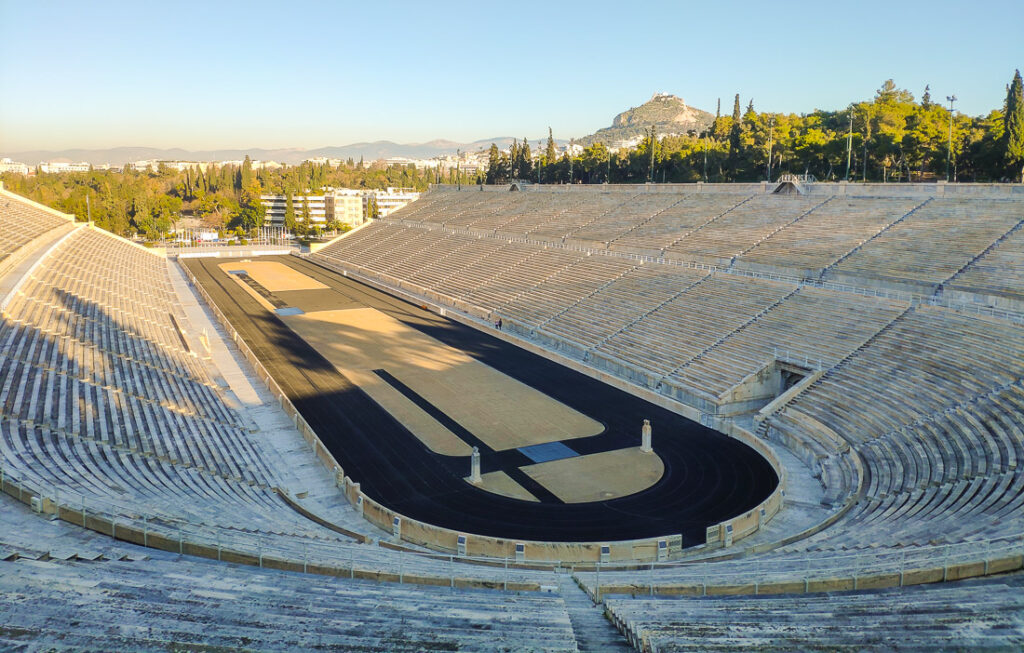
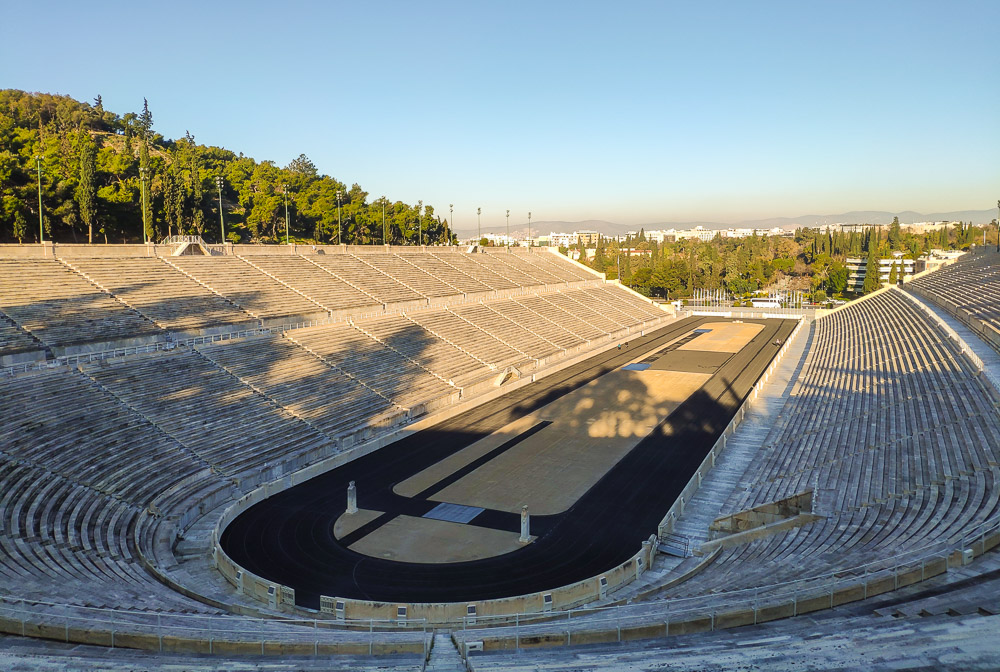
I managed a run of about half an hour with a total distance of around 4.2 kilometres. The track is flat and doesn’t present any significant challenges, though the longer track distance and the stadium’s relatively compact design gets noticeable after a while.
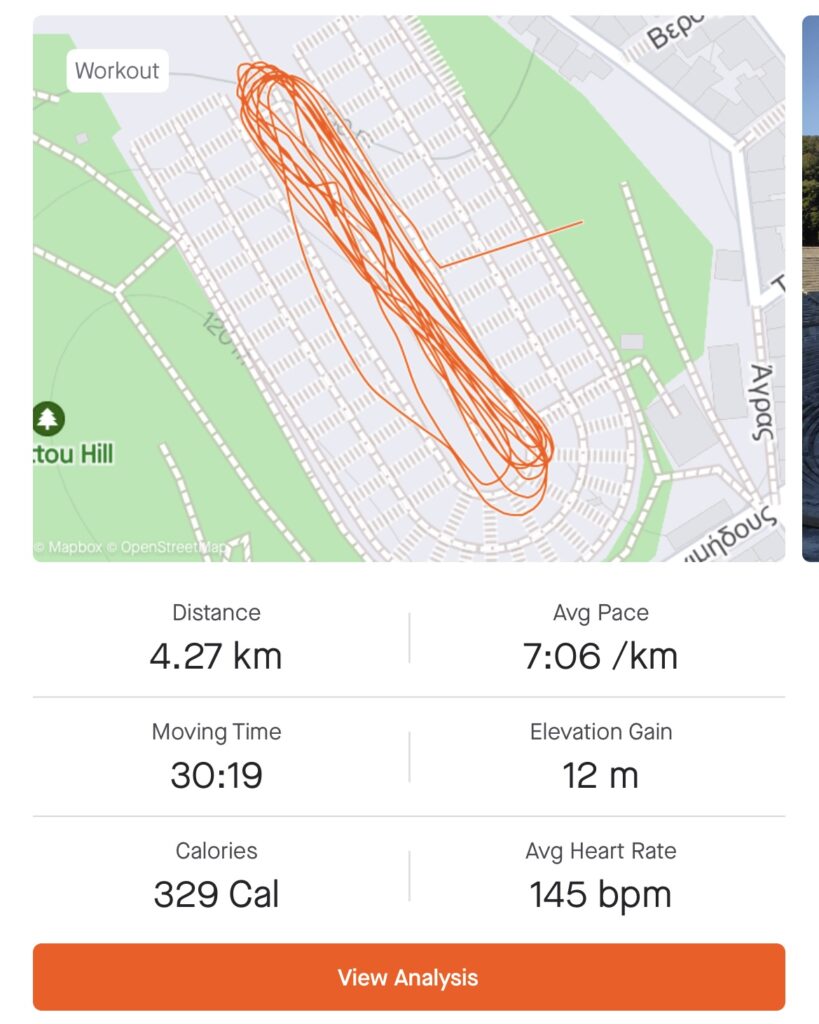
There were 4 other runners who had started their runs earlier than me that morning, and no other visitors throughout my run. In fact, I was the only visitor at the stadium after the runners had left, though a tour group did show up around 10:00 am when I was leaving.
I wasn’t in the fittest state that day and decided to have a rest on the audience stands after my run. The stadium boasts an official capacity of 45,000 spectators on its 2-tiered marble bleachers, which rises to a height of 22.5 metres. A flight of 107 steps brings you to the top level where you are rewarded with a great view of the entire stadium.
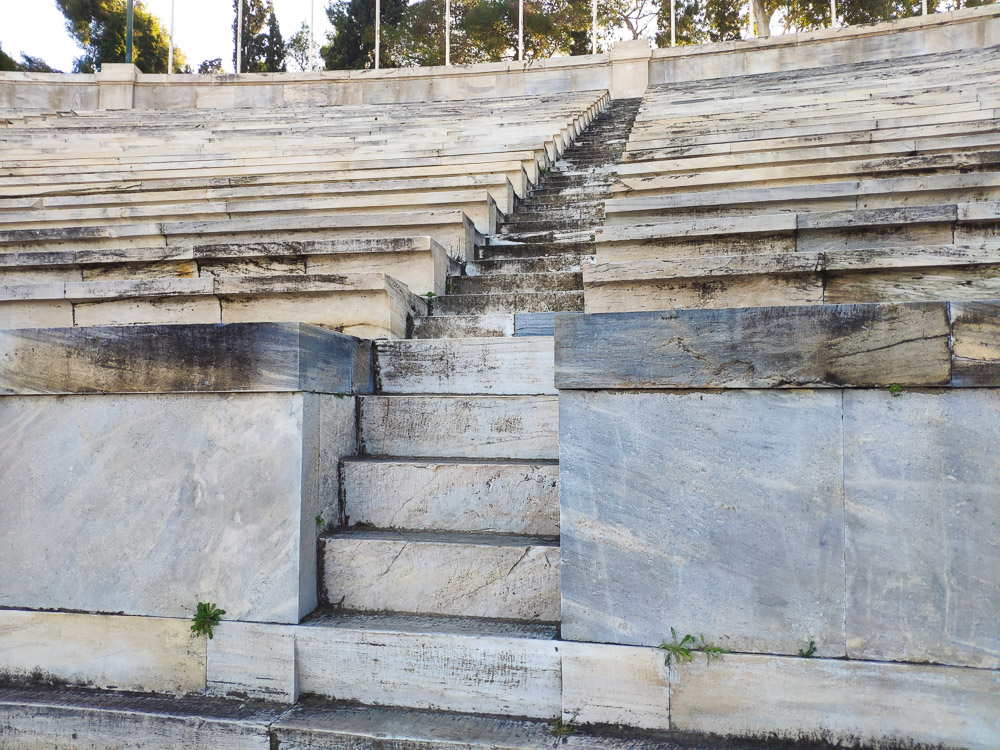
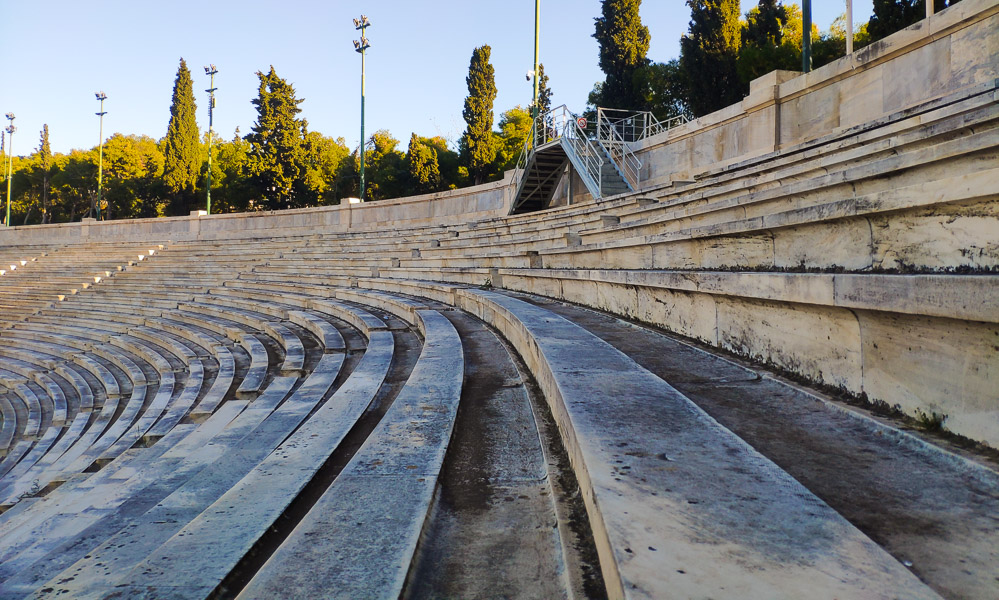
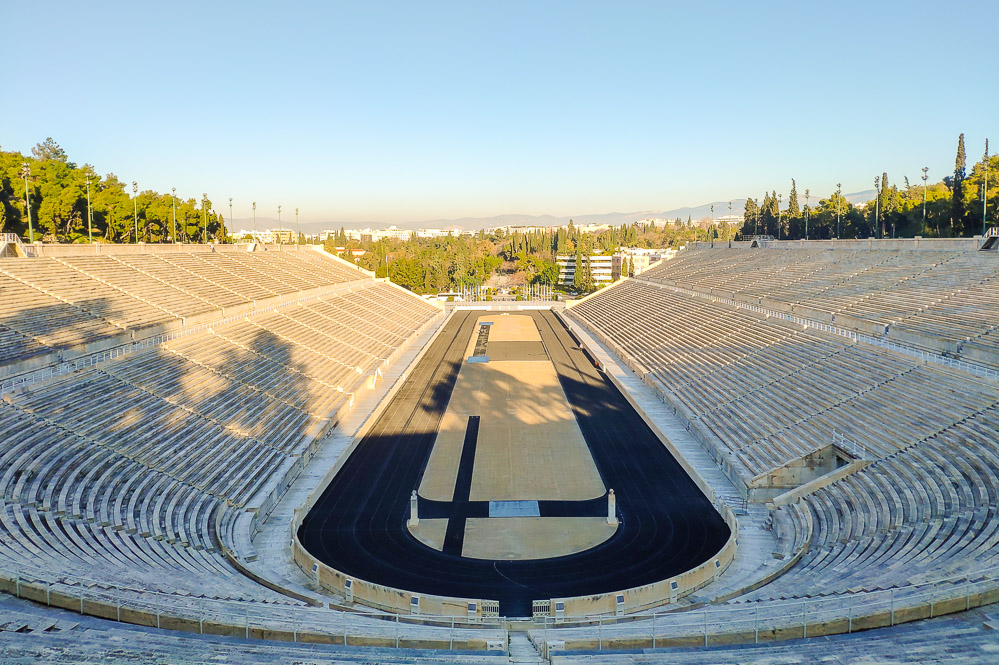
I got a bit too ambitious and decided to run up to the top level after my run. I made it, but my legs made it very clear that it was very spent. It also didn’t help that the first few steps of the second tier were taller than the ones before – more work when climbing up, but a hazard when descending.
The Museum
The stadium also features a small museum. It is accessed through a tunnel on the northern side of the track. The tunnel is as old as the stadium itself, and was used by athletes heading out to the track area during the Panathenaic Games of old.

A small exhibition about the stadium is placed at the end of the tunnel. A short flight of stairs then brings visitors up into a small exhibition space displaying the graphic posters and Olympic torches of the previous modern Olympic games.

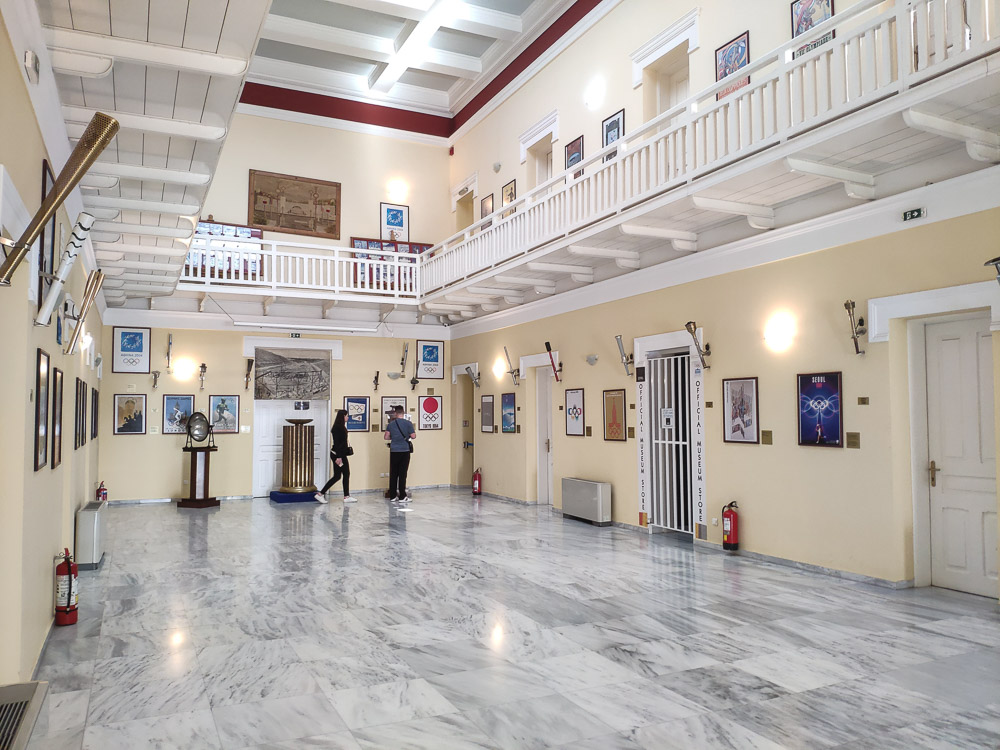
I wouldn’t really call it a “Museum”, but if you’re already spending 10 euros on the entrance fee, you might as well cover every corner of the stadium.
Brief history of the Stadium
The site of the stadium has a long history of sporting use. A racecourse once stood at the site since the 6th century BC, and hosted the Panathenaic Games every 4 years. A permanent stadium came next in the 4th century BC, when a parallelogram shaped stadium was built on the site by Lykourgos, an Athenian logographer.
Timeline of the Panathenaic Stadium
330 B.C – Athenian logographer Lykourgos builds a stadium on the site. It is 850 foot long and parallelogram shaped.
144 A.D – Herodes Atticus, an Athenian Roman Senator, funds the reconstruction of the stadium. The stadium is made of Pentelic marble and gains its present U-shape.
Late 4th century A.D – Roman Emperor Theodosius I bans Hellenistic festivals. The stadium is abandoned and falls into ruins. Its marbles are incorporated into other buildings.
1832 A.D – An independent Greece is established at the conclusion of the Greek War of Independence.
1836 to 1896 A.D – The stadium is excavated, rebuilt and refurbished in time to serve as a venue for the 1896 Olympics – the first International Olympic Games held in modern history.
The stadium would then go on to host various modern sporting events, most notably during the 2004 Athens Olympics, when it hosted the archery competitions and served as the finishing line for both the men’s and women’s Marathon.
Visiting the stadium
The stadium is located some 5 minutes from the Zappeion Hall and the National Garden on foot.
Google Maps link: https://goo.gl/maps/UseLgKMMP464Yjmz5
If you’re coming by tram, the nearest tram stop is Záppeio (Ζάππειο). If you’re on the tram heading towards Syntagma Square, the platform in use is on Ardittou Street; But if you’re coming on the tram from Syntagma Square, the tram stops at the platform on Vasilissis Olgas Avenue. From there, it is a 5-10 minute walk to the stadium.
Entrance fees
| Ticket | Price (€) |
|---|---|
| Regular Ticket | 10.00 |
| Reduced Price Ticket | 5.00 |
| WC/Toilets | 1.00 |
The entrance ticket also includes an audio guide tour of the site that is collected just next to the entrance gates. Note that the audio guide collection counter may not be open if you show up at 7:30 am for your morning jog, you might not be able to get your hands on an audio guide then.
Note: The entrance fees listed on the "Visit" section of the stadium's website are outdated. The current fees came into effect on 1st January 2022 onwards, and the only place it appears on the website is in the "News & Announcements" section of the website. Visit the official website for the Panathenaic Stadium for more information.
Opening hours and Morning Jog hours
The stadium’s regular opening hours are:
March – October: 8:00 am – 7:00 pm
November – February: 8:00 am – 5:00 pm
The morning jog period is from 7:30 am until 9:00 am daily. While the website says that you will be asked to fill up a declaration form ‘accepting the safety regulations’ of the stadium, I wasn’t given one to fill up when I was there and nor did the ticketing staff ask me to provide one.
Final Thoughts
If you’re an avid runner, the stadium is worth a visit for a run in the morning. But if you only want to see the stadium itself, I can’t really say that the €10.00 entrance fee is worth paying.
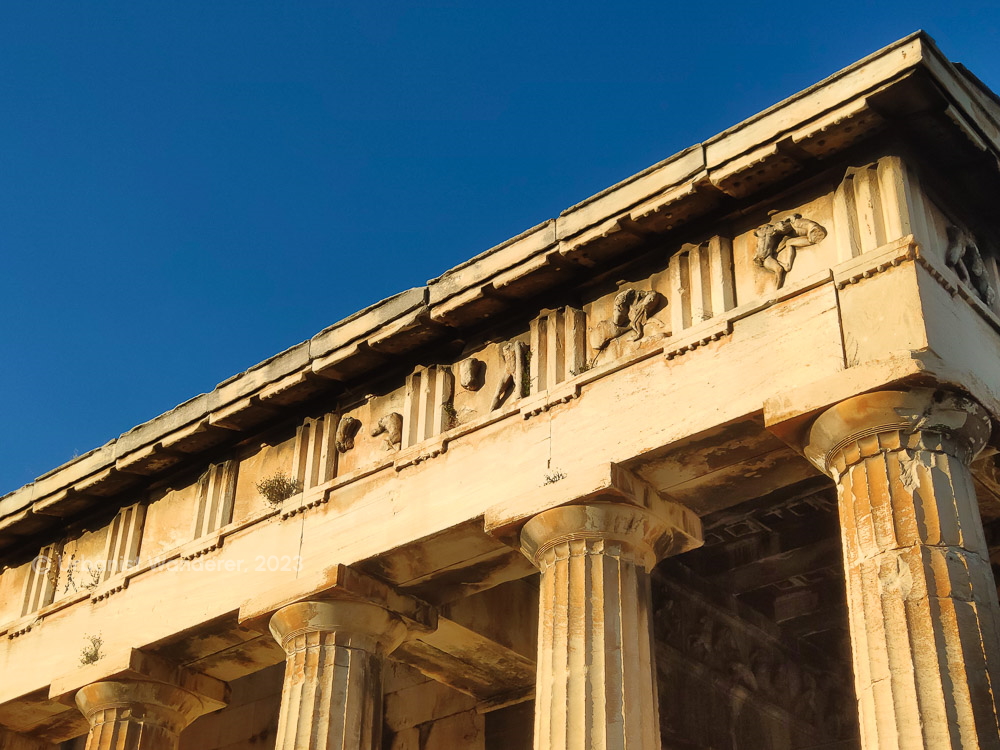
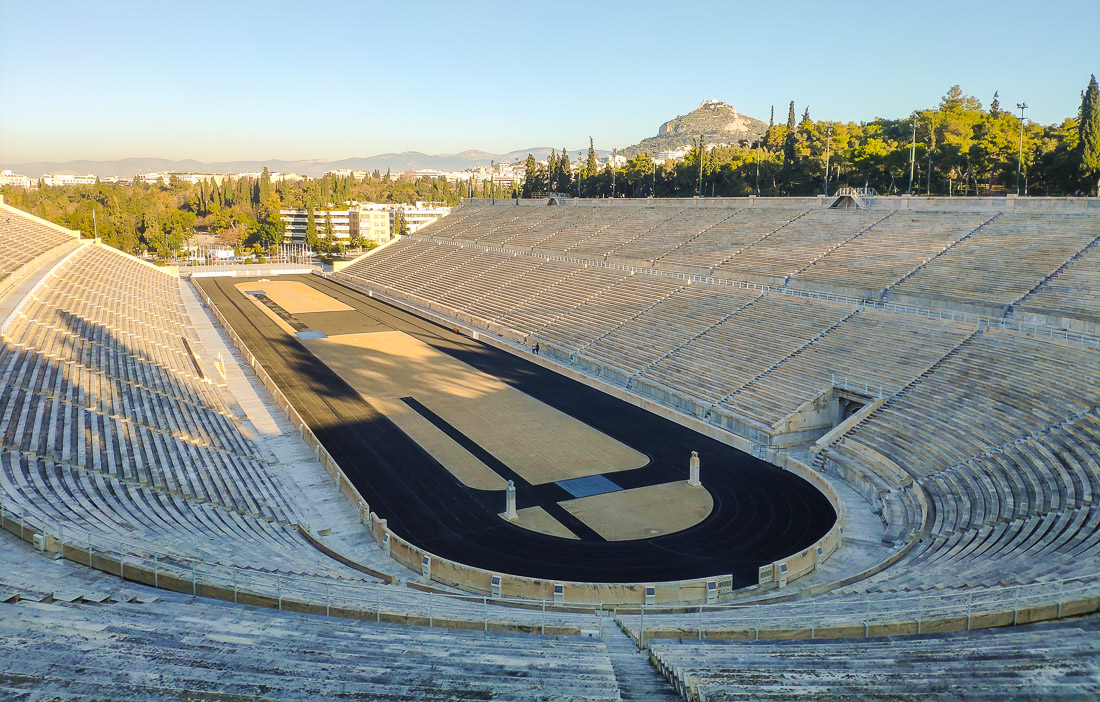
Leave a Reply